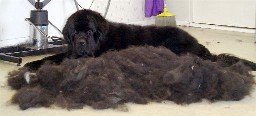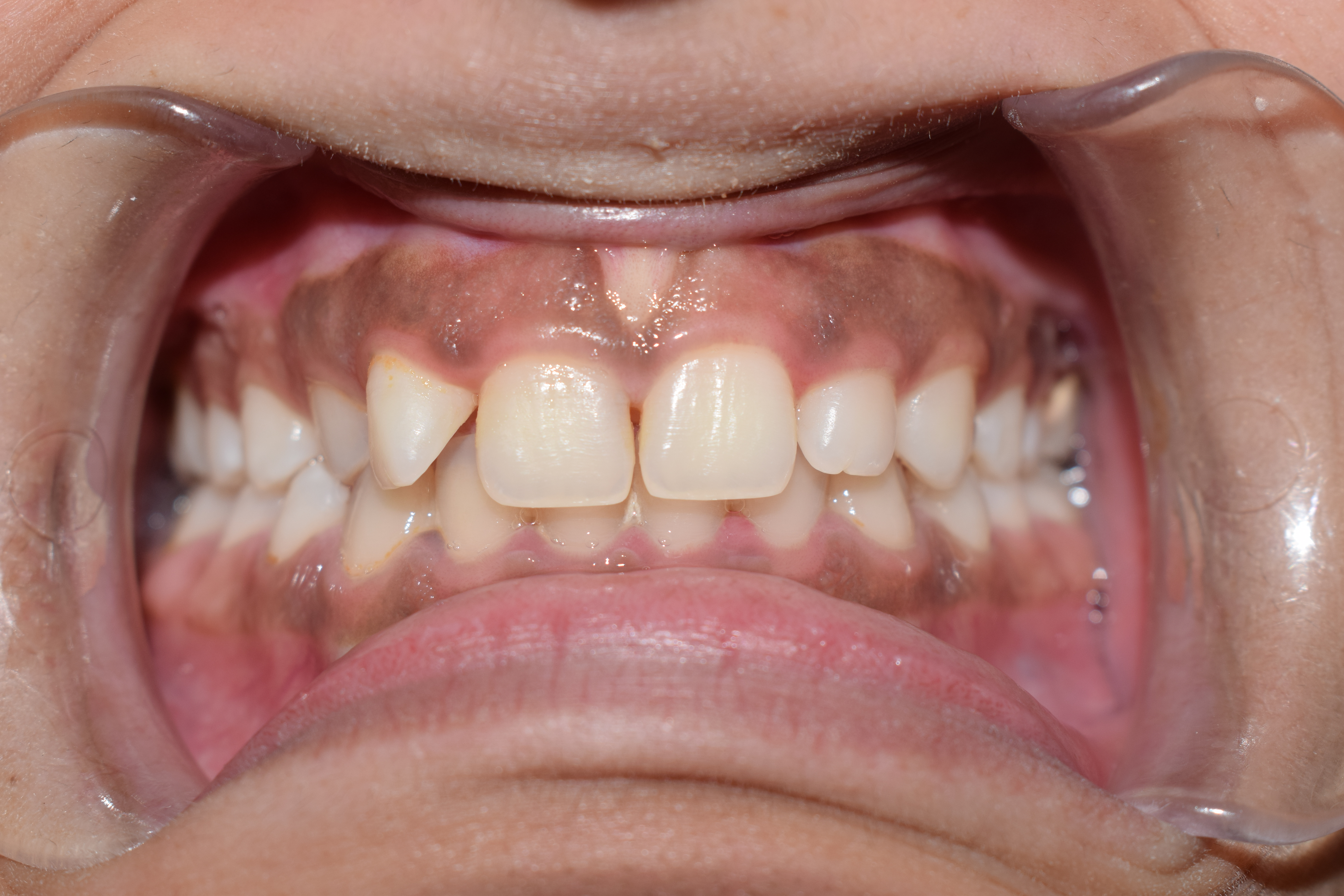|
Dog Grooming
Dog grooming refers to both the hygienic care and cleaning of a dog, as well as a process by which a dog's physical appearance is enhanced for showing or other types of competition. A dog groomer (or simply "groomer") is a person who earns their living grooming dogs. Reasons for grooming Grooming is a vital part in the well-being and healthiness of a dog, which can improve its quality of life. How much grooming a dog needs depends on its breed, age, and health. Regular grooming helps to ensure the dog is healthy and comfortable. While many dogs ''shed'', others such as the poodle, do not shed as profusely and require grooming every 4-8 weeks. The main reasons for daily grooming include: * decreased chance of various health problems, such as thrush, scratches, and other skin problems * general cleanliness of the dog * monitoring of the dog's health by checking for cuts, hot spots, swelling, lameness, or changes in temperament, all of which could be indicative of illness * ... [...More Info...] [...Related Items...] OR: [Wikipedia] [Google] [Baidu] |
Hair Conditioner
Hair conditioner is a hair care cosmetic product used to improve the feel, texture, appearance, and manageability of hair. Its main purpose is to reduce friction between strands of hair to allow smoother brushing or combing, which might otherwise cause damage to the scalp. Various other benefits are often advertised, such as hair repair, strengthening, or a reduction in split ends. Conditioners are available in a wide range of forms including viscous liquids, gels, and creams, as well as thinner lotions and sprays. Hair conditioner is usually used after the hair has been washed with shampoo. It is applied and worked into the hair, and may either be rinsed out a short time later or left in. History For centuries, natural oils have been used to condition human hair. A conditioner popular with men in the late Victorian era was Macassar oil, but this product was quite greasy and necessitated the pinning of a small cloth, known as an antimacassar, to the headrests of chairs and sofas ... [...More Info...] [...Related Items...] OR: [Wikipedia] [Google] [Baidu] |
Nail Clipper
A nail clipper (also called nail clippers, a nail trimmer, a nail cutter or nipper type) is a hand tool used to trim fingernails, toenails and hangnails. Design Nail clippers are usually made of stainless steel but can also be made of plastic and aluminum. Two common varieties are the plier type and the compound lever type. Many nail clippers usually come with a miniature file fixed to it to allow rough edges of nails to be manicured. Nail clippers occasionally come with a nail catcher. The nail clipper consists of a head that may be concave or convex. Specialized nail clippers which have convex clipping ends are intended for trimming toenails, while concave clipping ends are for fingernails. The cutting head may be manufactured to be parallel or perpendicular to the principal axis of the cutter. Cutting heads that are parallel to the principal axis are made to address accessibility issues involved with cutting toenails. History Before the invention of the modern nail clippe ... [...More Info...] [...Related Items...] OR: [Wikipedia] [Google] [Baidu] |
Border Terrier
The Border Terrier is a British breed of small, rough-coated terrier. It originates from the area of the Anglo-Scottish border, and shares ancestry with the Dandie Dinmont Terrier and the Bedlington Terrier from the same area. The dogs were traditionally used in fox-hunting, and worked with the Border Hunt in Northumberland. The breed was officially recognised by The Kennel Club in Great Britain in 1920, and by the American Kennel Club in 1930. History Originally the Border Terrier was referred to as the Coquetdale Terrier or Redesdale Terrier from the area in which it evolved, but by the late 1800s it was generally known as the Border Terrier, probably because of its long history with the Border Hunt in Northumberland. It shares its ancestry with that of the Bedlington Terrier and the Dandie Dinmont Terrier. It was recognised as a breed by the Kennel Club in 1920, the same year The Border Terrier Club was formed. Their original purpose was to bolt foxes which had gone ... [...More Info...] [...Related Items...] OR: [Wikipedia] [Google] [Baidu] |
Lhasa Apso
The Lhasa Apso ( ) is a non-sporting dog breed originating in Tibet. It has traditionally been used as an interior sentinel. Etymology Lhasa is the capital city of Tibet, and ''apso'' is a word from the Tibetan language. There is some debate over the exact origin of the name; some claim that the word "apso" is an anglicized form of the Tibetan word for goatee ("ag-tshom", ཨག་ཚོམ་) or perhaps "ra-pho" (ར་ཕོ་) meaning "billy goat". It may also be a compound noun meaning "bark-guard" (lit. "ap" ��པ to bark, and "so" ��ོ་ to guard). History The Lhasa Apso originated in Tibet. In the early twentieth century some Tibetan dogs were brought to the United Kingdom by military men returning from the Indian subcontinent. These were of mixed types, similar either to what would become the Lhasa Apso or to what would become the Tibetan Terrier; they were collectively known as "Lhasa Terrier". The original American pair of Lhasas was a gift from Thubten ... [...More Info...] [...Related Items...] OR: [Wikipedia] [Google] [Baidu] |
Gloves
A glove is a garment covering the hand. Gloves usually have separate sheaths or openings for each finger and the thumb. If there is an opening but no (or a short) covering sheath for each finger they are called fingerless gloves. Fingerless gloves having one small opening rather than individual openings for each finger are sometimes called gauntlets, though gauntlets are not necessarily fingerless. Gloves which cover the entire hand or fist but do not have separate finger openings or sheaths are called mittens. Mittens are warmer than other styles of gloves made of the same material because fingers maintain their warmth better when they are in contact with each other; reduced surface area reduces heat loss. A hybrid of glove and mitten contains open-ended sheaths for the four fingers (as in a fingerless glove, but not the thumb) and an additional compartment encapsulating the four fingers. This compartment can be lifted off the fingers and folded back to allow the individual fi ... [...More Info...] [...Related Items...] OR: [Wikipedia] [Google] [Baidu] |
Breeds
A breed is a specific group of domestic animals having homogeneous appearance (phenotype), homogeneous behavior, and/or other characteristics that distinguish it from other organisms of the same species. In literature, there exist several slightly deviating definitions. Breeds are formed through genetic isolation and either natural adaptation to the environment or selective breeding, or a combination of the two. Despite the centrality of the idea of "breeds" to animal husbandry and agriculture, no single, scientifically accepted definition of the term exists. A breed is therefore not an objective or biologically verifiable classification but is instead a term of art amongst groups of breeders who share a consensus around what qualities make some members of a given species members of a nameable subset. Another point of view is that a breed is consistent enough in type to be logically grouped together and when mated within the group produce the same type. When bred together, indiv ... [...More Info...] [...Related Items...] OR: [Wikipedia] [Google] [Baidu] |
Dog Brush
The dog (''Canis familiaris'' or ''Canis lupus familiaris'') is a domesticated descendant of the wolf. Also called the domestic dog, it is derived from the extinct Pleistocene wolf, and the modern wolf is the dog's nearest living relative. Dogs were the first species to be domesticated by hunter-gatherers over 15,000 years ago before the development of agriculture. Due to their long association with humans, dogs have expanded to a large number of domestic individuals and gained the ability to thrive on a starch-rich diet that would be inadequate for other canids. The dog has been selectively bred over millennia for various behaviors, sensory capabilities, and physical attributes. Dog breeds vary widely in shape, size, and color. They perform many roles for humans, such as hunting, herding, pulling loads, protection, assisting police and the military, companionship, therapy, and aiding disabled people. Over the millennia, dogs became uniquely adapted to human behavior, and ... [...More Info...] [...Related Items...] OR: [Wikipedia] [Google] [Baidu] |
Ribbons
A ribbon or riband is a thin band of material, typically cloth but also plastic or sometimes metal, used primarily as decorative binding and tying. Cloth ribbons are made of natural materials such as silk, cotton, and jute and of synthetic materials, such as polyester, nylon, and polypropylene. Ribbon is used for useful, ornamental, and symbolic purposes. Cultures around the world use ribbon in their hair, around the body, and as ornament on non-human animals, buildings, and packaging. Some popular fabrics used to make ribbons are satin, organza, sheer, silk, velvet, and grosgrain. Etymology The word ribbon comes from Middle English ''ribban'' or ''riban'' from Old French ''ruban'', which is probably of Germanic origin. Cloth Along with that of tapes, fringes, and other smallwares, the manufacture of cloth ribbons forms a special department of the textile industries. The essential feature of a ribbon loom is the simultaneous weaving in one loom frame of two or more webs, g ... [...More Info...] [...Related Items...] OR: [Wikipedia] [Google] [Baidu] |
Sugar
Sugar is the generic name for sweet-tasting, soluble carbohydrates, many of which are used in food. Simple sugars, also called monosaccharides, include glucose, fructose, and galactose. Compound sugars, also called disaccharides or double sugars, are molecules made of two bonded monosaccharides; common examples are sucrose (glucose + fructose), lactose (glucose + galactose), and maltose (two molecules of glucose). White sugar is a refined form of sucrose. In the body, compound sugars are hydrolysed into simple sugars. Longer chains of monosaccharides (>2) are not regarded as sugars, and are called oligosaccharides or polysaccharides. Starch is a glucose polymer found in plants, the most abundant source of energy in human food. Some other chemical substances, such as glycerol and sugar alcohols, may have a sweet taste, but are not classified as sugar. Sugars are found in the tissues of most plants. Honey and fruits are abundant natural sources of simple sugars. Suc ... [...More Info...] [...Related Items...] OR: [Wikipedia] [Google] [Baidu] |
Gums
The gums or gingiva (plural: ''gingivae'') consist of the mucosal tissue that lies over the mandible and maxilla inside the mouth. Gum health and disease can have an effect on general health. Structure The gums are part of the soft tissue lining of the mouth. They surround the teeth and provide a seal around them. Unlike the soft tissue linings of the lips and cheeks, most of the gums are tightly bound to the underlying bone which helps resist the friction of food passing over them. Thus when healthy, it presents an effective barrier to the barrage of periodontal insults to deeper tissue. Healthy gums are usually coral pink in light skinned people, and may be naturally darker with melanin pigmentation. Changes in color, particularly increased redness, together with swelling and an increased tendency to bleed, suggest an inflammation that is possibly due to the accumulation of bacterial plaque. Overall, the clinical appearance of the tissue reflects the underlying histology, bo ... [...More Info...] [...Related Items...] OR: [Wikipedia] [Google] [Baidu] |





.jpg)




